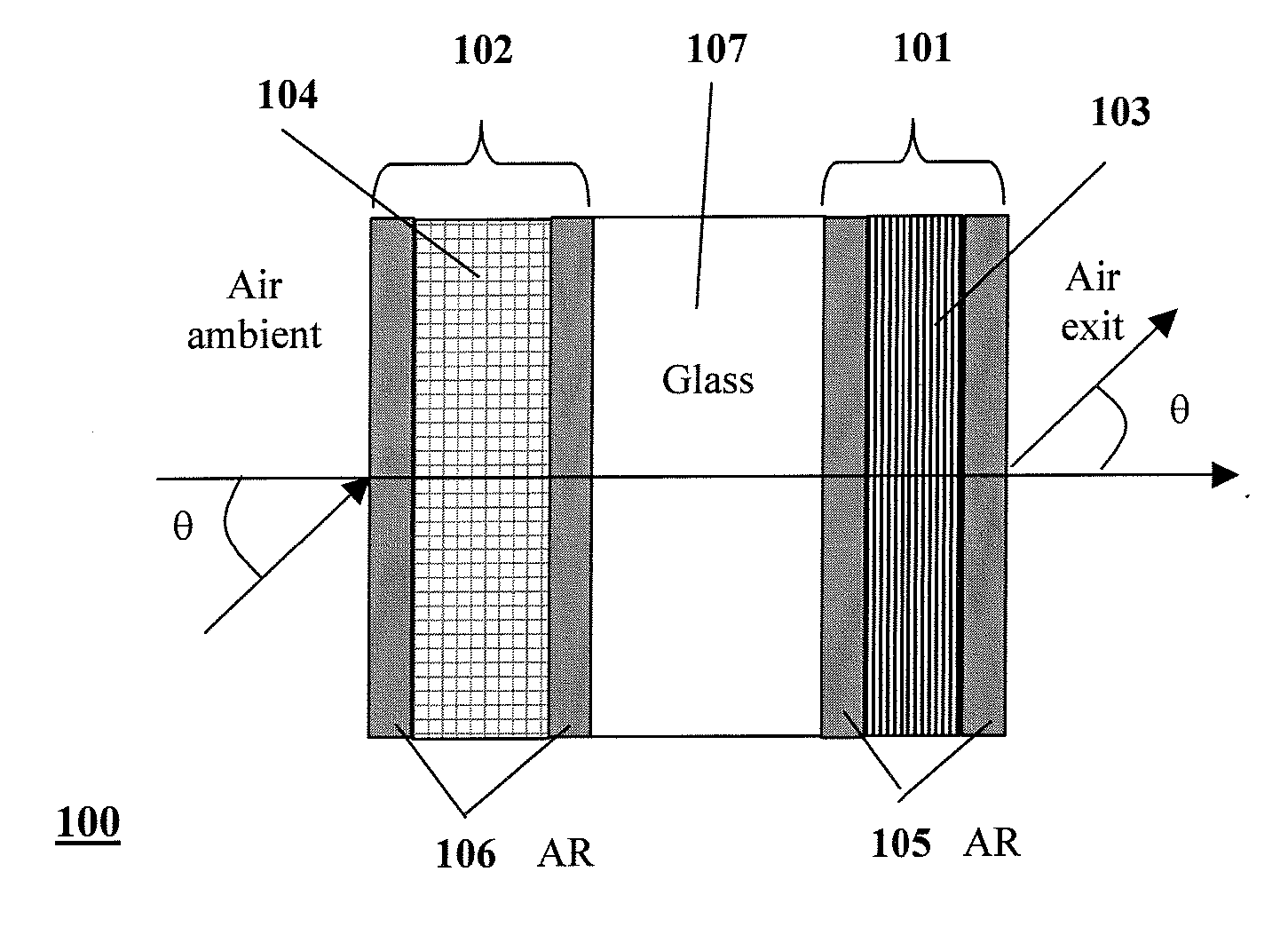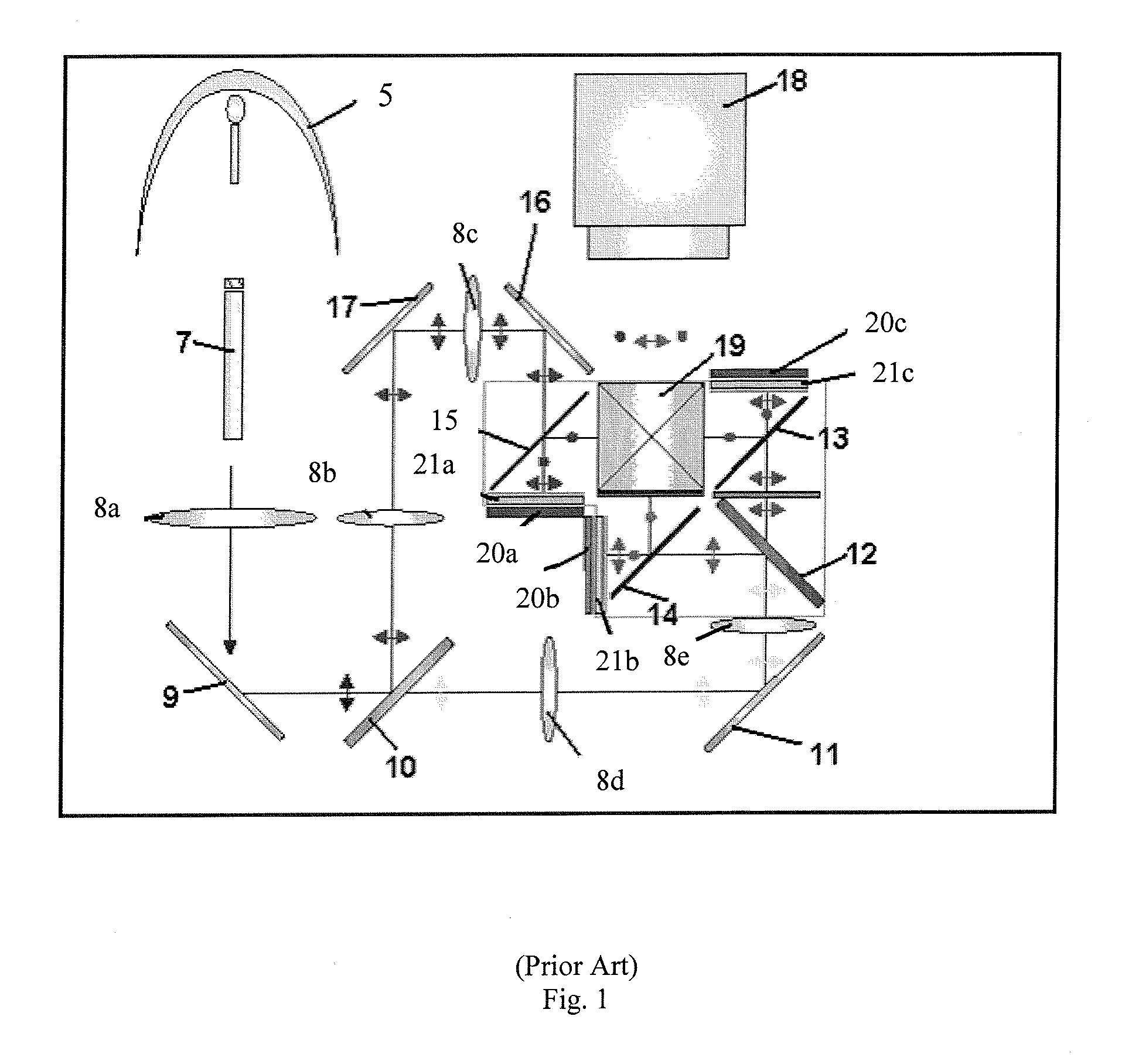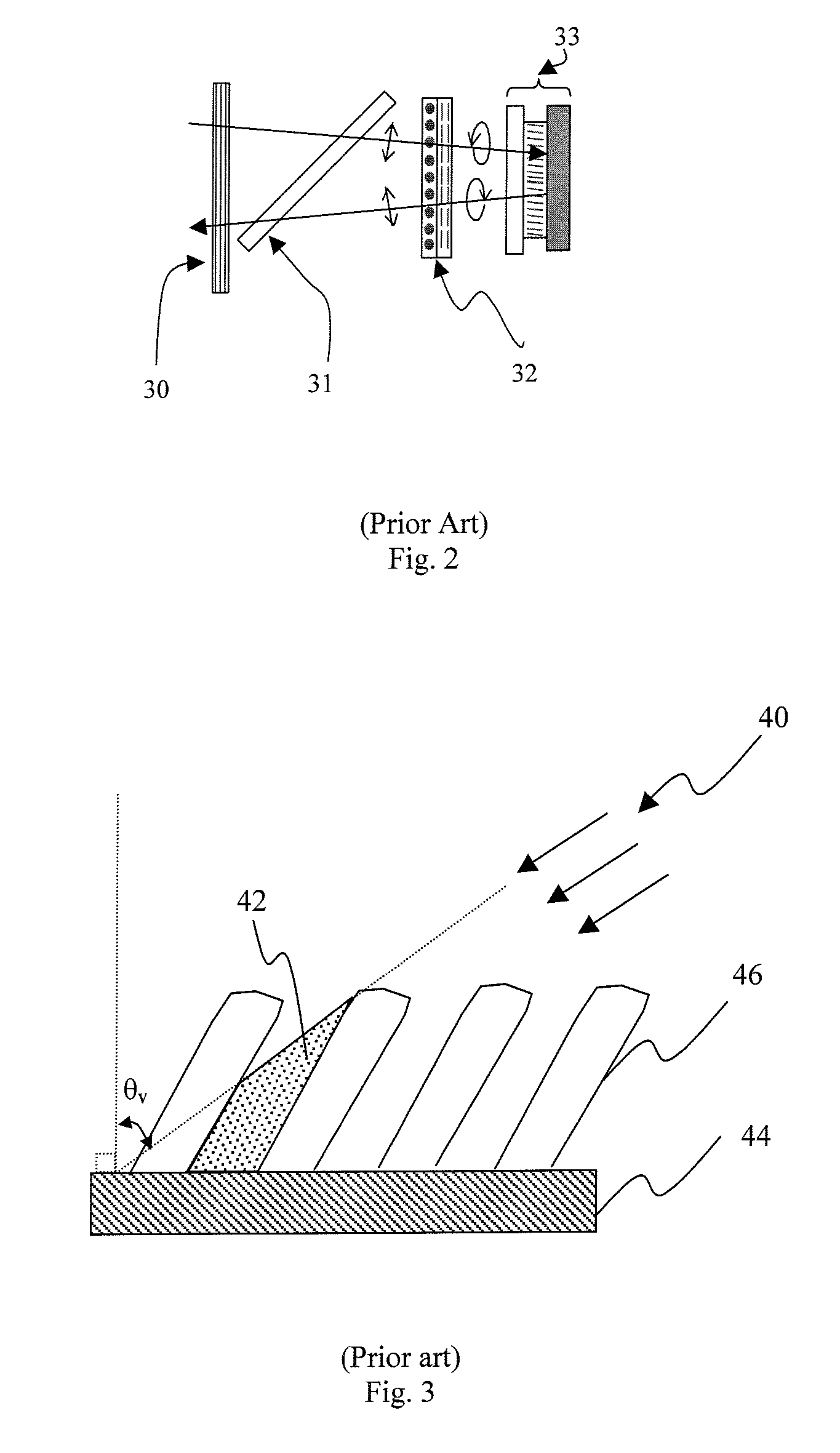Thin-Film Optical Retarders
a thin film, optical retarder technology, applied in the field of polarization control, can solve the problems of loss of birefringence, high cost of growing and polishing the crystal plate, and the unsatisfactory polarization-based projection system of stretched polymer films, etc., to achieve high durability and/or stability.
- Summary
- Abstract
- Description
- Claims
- Application Information
AI Technical Summary
Benefits of technology
Problems solved by technology
Method used
Image
Examples
Embodiment Construction
[0059] As previously discussed, birefringence in obliquely deposited thin film coatings is attributed predominantly to the columnar microstructure of the films, wherein the birefringence is dependent on the shape and direction, or tilt, of the columns. The column direction relative to the surface normal is approximately related to the angle of incidence of the coating material arriving at the substrate by the tangent rule
tan ψ=0.5 tan θv (1)
where ψ is the angle of the column relative to the substrate normal, and θv is the deposition angle relative to the substrate normal. The column angle typically is the direction of the z-axis of the birefringent material. This relationship has been experimentally verified for oxide materials such as TiO2, Ta2O5 and ZrO2. In contrast, SiO2 has been found to form mostly isotropic films, whereas films of Ta2O5 are more closely approximated by
tan ψ=0.322 tan θv (2)
[0060] The experimental relationship between the in-plane (i.e., normal incide...
PUM
 Login to View More
Login to View More Abstract
Description
Claims
Application Information
 Login to View More
Login to View More - R&D
- Intellectual Property
- Life Sciences
- Materials
- Tech Scout
- Unparalleled Data Quality
- Higher Quality Content
- 60% Fewer Hallucinations
Browse by: Latest US Patents, China's latest patents, Technical Efficacy Thesaurus, Application Domain, Technology Topic, Popular Technical Reports.
© 2025 PatSnap. All rights reserved.Legal|Privacy policy|Modern Slavery Act Transparency Statement|Sitemap|About US| Contact US: help@patsnap.com



